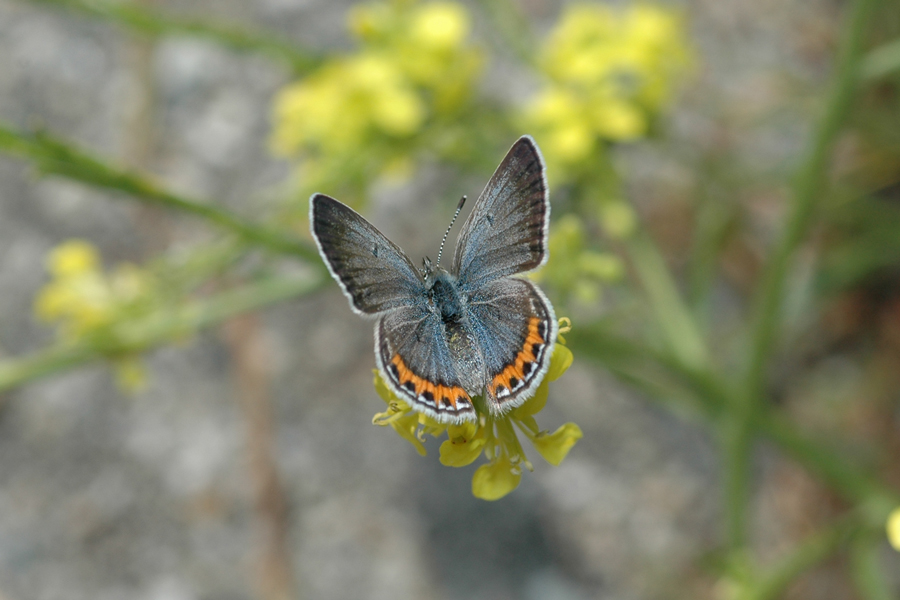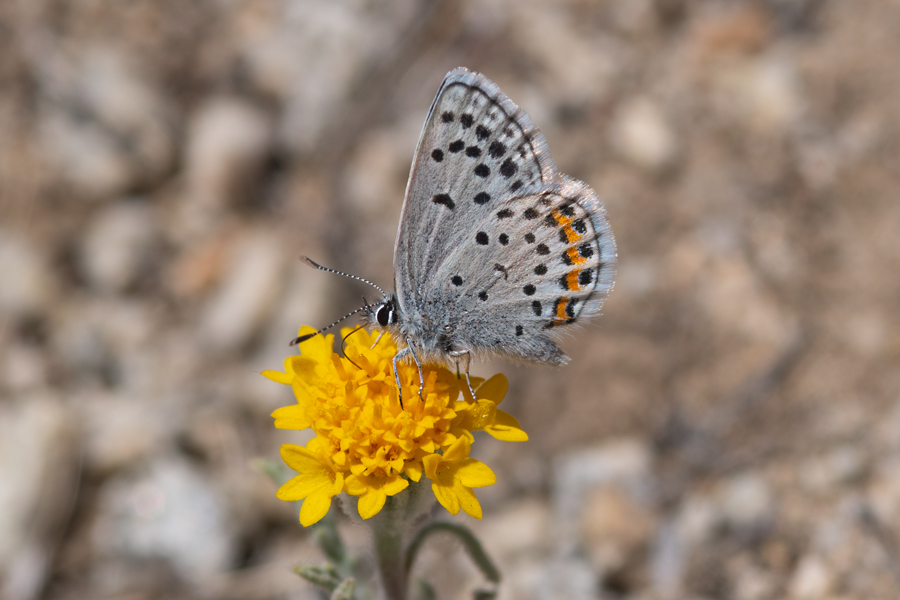Icaricia monticola
Clemence's Blue
The type locality for monticola is Pasadena (Victor Clemence collected them from the "Arroyo Seco" in 1907 - a lectotype has been designated), and my photos from up San Gabriel Canyon - not far from there - match the type specimens very well. That's a good reference point, but these will look a bit different to the south or the north. What we were long calling Plebejus/icaricia lupini monticola is now understood to be a different species from I. lupini chlorina. There are places where the two entities both fly (as in the Tehachapis), monticola flying earlier and using fasciculatum, and chlorina flying next using umbellatum. According to John Emmel (pers. comm), chlorina larvae are still eating in May while monticola is flying in the Tehachapis. Ken Davenport, in his Kern-Tulare publication, also mentions lower elevation monticola on fasciculatum flying earlier than the mid-June to July chlorina on umbellatum at higher elevations; he mentions worn monticola flying with fresh chlorina.
Males are much more uniformly blue on the dorsal side, while females range from a denim blue to brown or even a melange or blue, brown and green. The orange aurora is bolder than in acmon blues and females (and some males) will have a dark edging. Acmon blues are usually smaller than monticola. Both monticola and chlorina fly in one brood per year and are closely associated with their host buckwheat, while acmon is multiple-brooded and can be found much of the year in many places using many different larval food plants.






